Store cupboard essentials every kitchen must have
Cupboard love
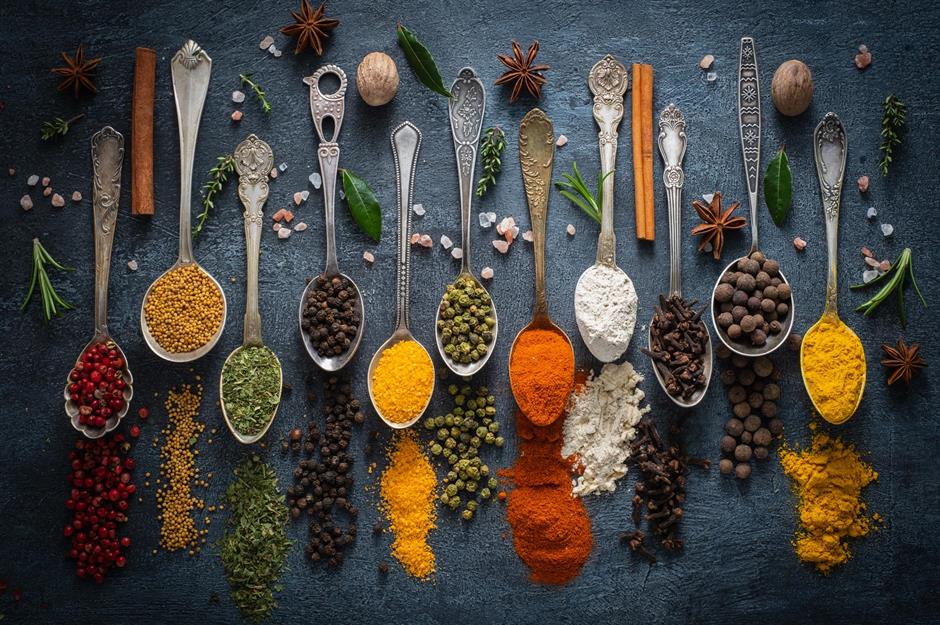
There's no doubt that a well-stocked store cupboard makes cooking easier, faster and more enjoyable. Having ingredients to hand gives you the power to add a pinch of this or a splash or that, transforming an everyday recipe into a dish that really sings. Some store cupboard ingredients can end up languishing for months or even years, though, so stocking up on the right ones is essential. Take a look at our list of must-haves, as we count down to our favourite ingredients you should never be without.
Click or scroll through our gallery to reveal the store cupboard essentials you should always have in stock.
40. Lemon juice
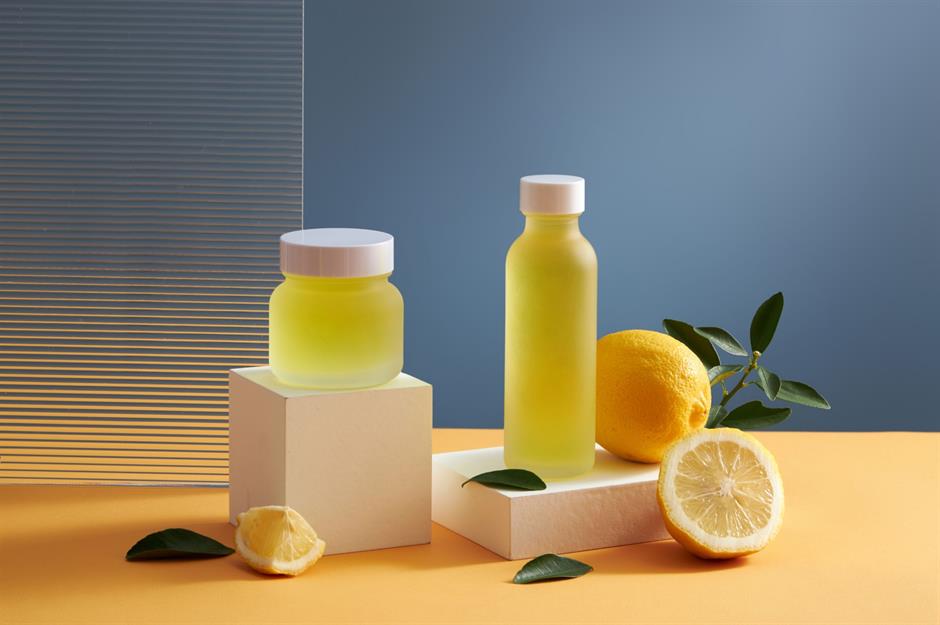
Bottled lemon juice isn’t quite as good as fresh; however, it's useful in a pinch, and it has a long shelf life. A splash of bottled lemon juice makes a good seasoning, and it can be used for sauces and salad dressings, too. Plus, it’s a classic combination when paired with sugar on crêpes or pancakes. What could be more convenient?
39. Chillies
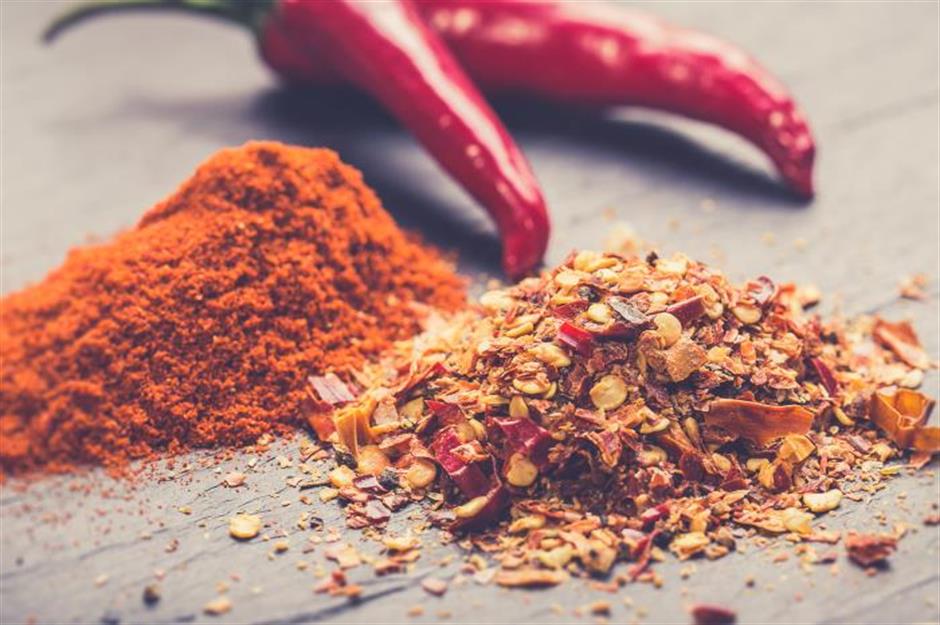
Whether you prefer chilli flakes or chilli powder, it's worth adding a little heat to your store cupboard. Chilli gives warmth, but it doesn’t have to blow your head off – a little sprinkle can be enough. It acts as a flavour enhancer too, especially when used in fish or shellfish dishes. For example, it brings out the flavour of squid and mussels beautifully without overpowering them.
38. Coconut milk and cream
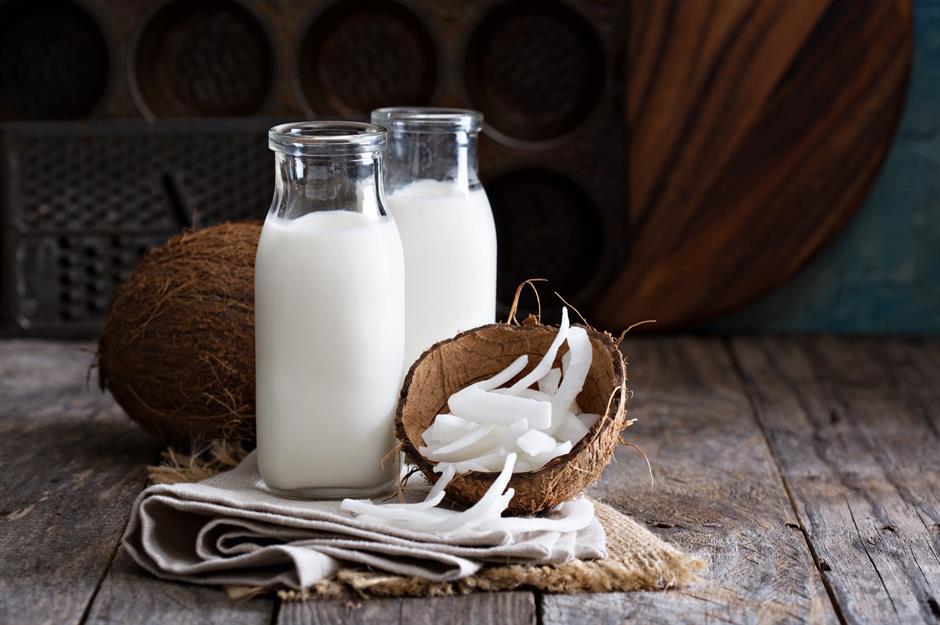
A tin of coconut milk is just what you need for Thai and South Indian curries, lending creamy sweetness to your cooking. Cartons of coconut cream do a similar job; this product is thicker and contains less water, so it works well if you’re making a less saucy dish. Coconut milk makes a mean smoothie too, working as a great dairy-free replacement for regular milk.
37. Instant coffee

Whatever your preference for coffee, a small jar of instant granules is a must for bakers and dessert lovers. After all, what would tiramisù be without that kick of strong coffee? As well as coffee-flavoured dishes, you also have the option to enhance other flavours with a spoonful or two of granules. Chocolate flavours are deepened with the addition of coffee, but chocolate will remain the dominant flavour.
36. Porridge oats
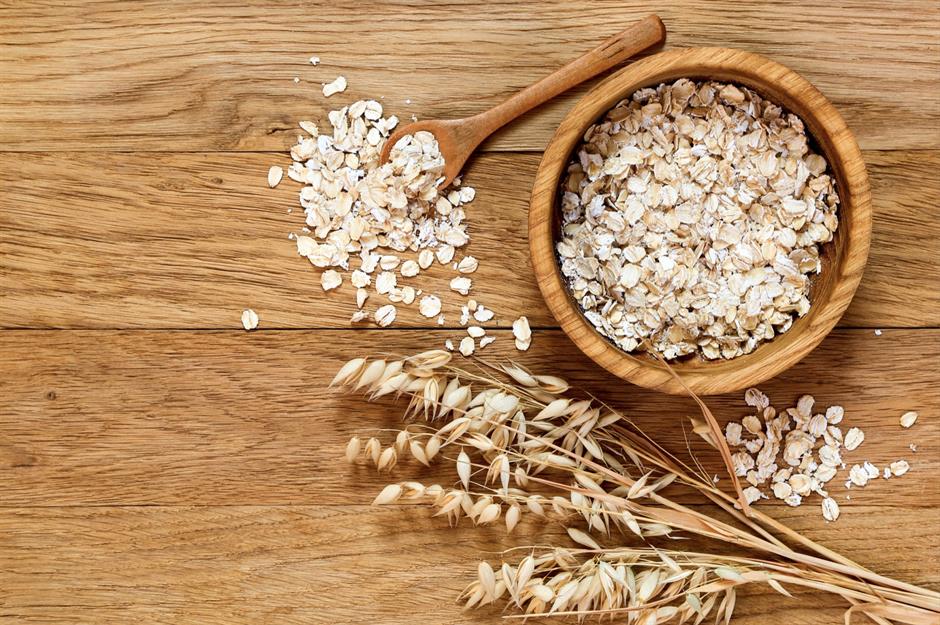
If there’s one type of cereal to keep in your cupboard, it’s oats. They make a hearty, energising breakfast, whether served hot or mixed with your favourite fruit to create overnight oats – and that’s not all they’re good for. They can also be used to whip up a tray of flapjacks or cereal bars, and they’d make the perfect topping for a fruit crumble or crisp.
35. Dried fruit
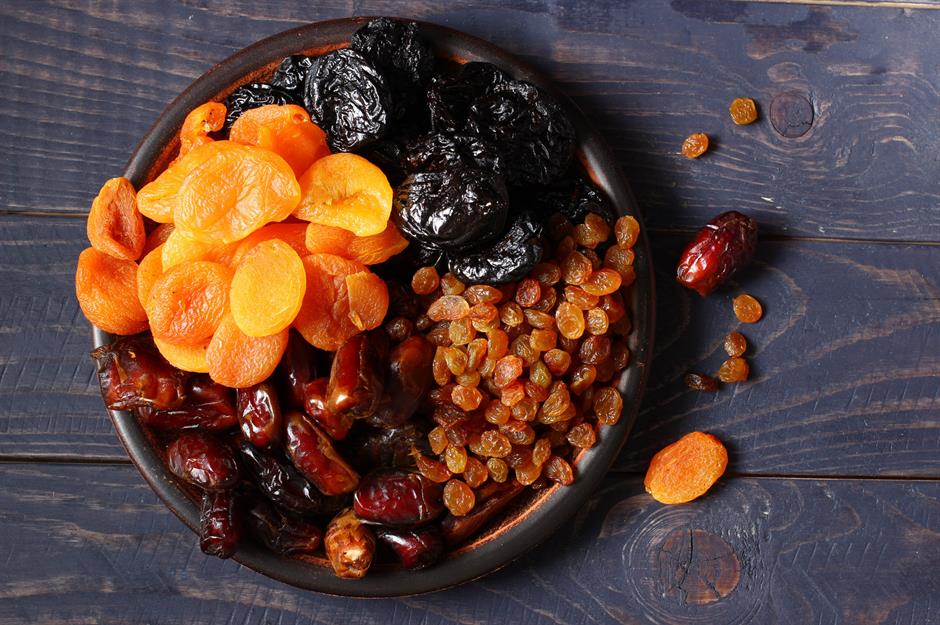
Not just for fruit cake and cookies, dried fruit makes a great instant snack. Apricots and prunes can also be used in savoury dishes such as a North African tagine – a slow-cooked casserole with a lovely balance of spice and sweetness. Unless it says it’s ready to eat, give your dried fruit (especially sultanas and raisins) a wash before using or eating them. You'll be surprised at the amount of grit in there.
34. Jarred garlic
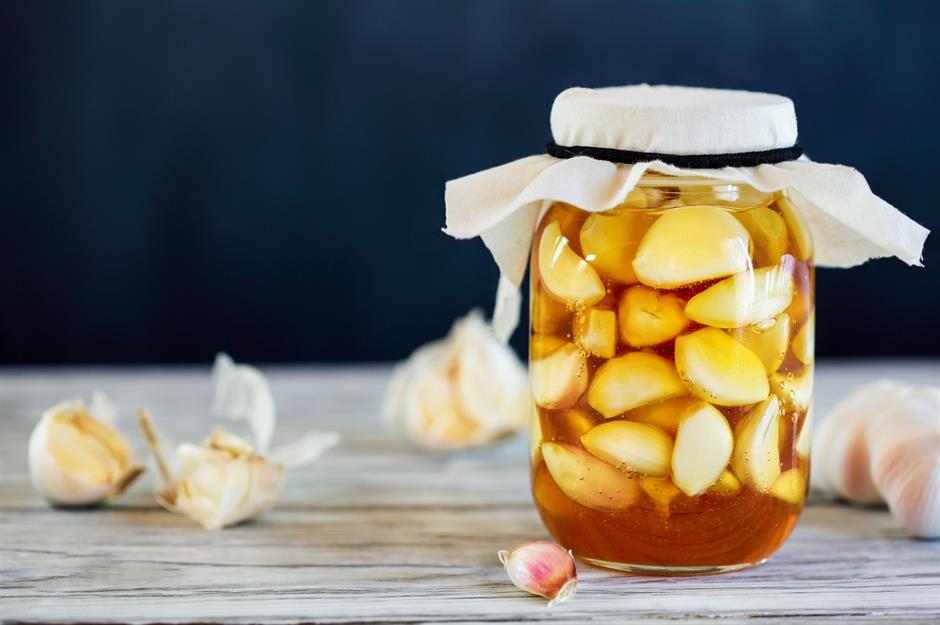
Fresh garlic is always good to have within reach, and it tends to last a while. But jarred garlic also has its place, perfect for those days when finely chopping a single clove just doesn’t appeal. For extra flavour, pickled garlic or confit garlic both add oomph to sauces, and they can be spread over crackers or bread for an indulgent snack, too.
33. Spices
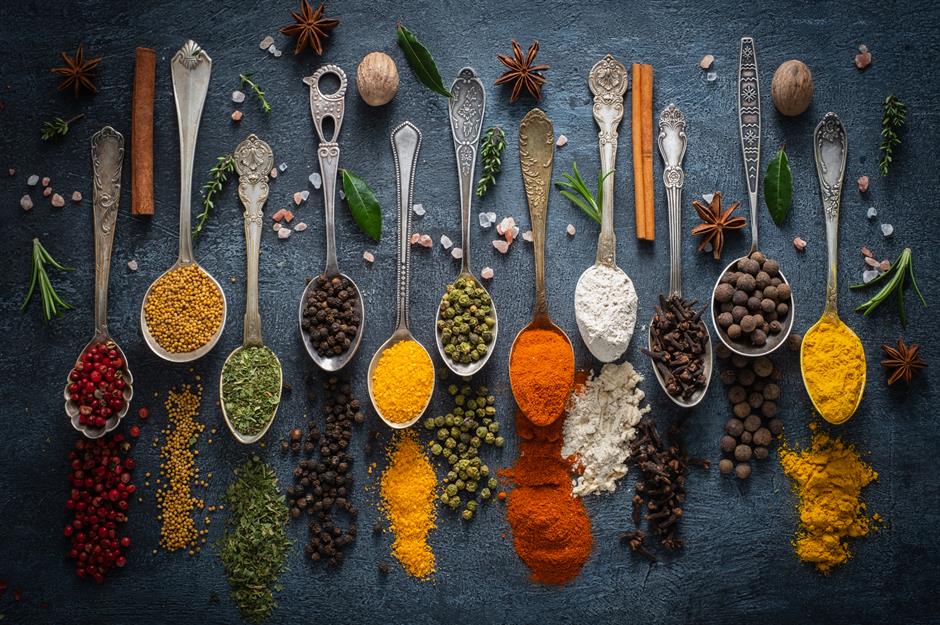
The spices you need in your cupboard are the ones you use most frequently. If you love Indian food, you'll want cumin, coriander seeds and turmeric, to start with. For Spanish dishes, you'll need paprika and saffron. Chinese? Star anise. Some spices are used frequently in multiple cuisines, so things like cardamom (great for savoury Indian dishes or Nordic sweets) or coriander (useful for Mexican food and several Asian cuisines) are hard workers. If you can, buy most of your spices as whole seeds or pods and grind your own. Spices deteriorate, so only buy them as and when you need them.
32. Fish sauce
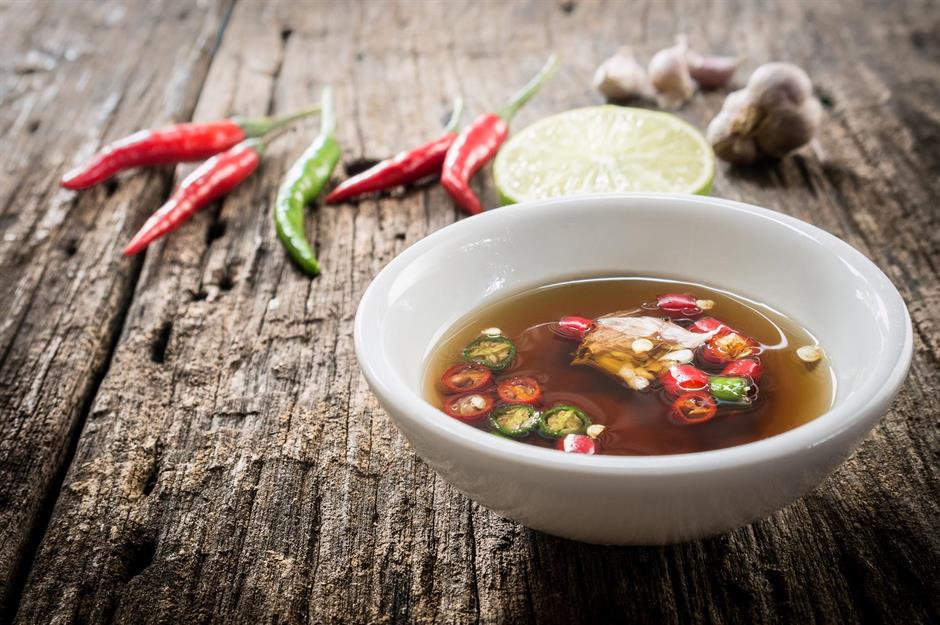
Fish sauce is often used in Thai and Vietnamese recipes. It's made from fermented fish (stay with us!), and it adds a savoury, salty flavour. You only use it in small quantities, but it does add an incredible depth of flavour to a recipe. It can be used in dipping sauces and salad dressings, as well as in curries.
31. Flour
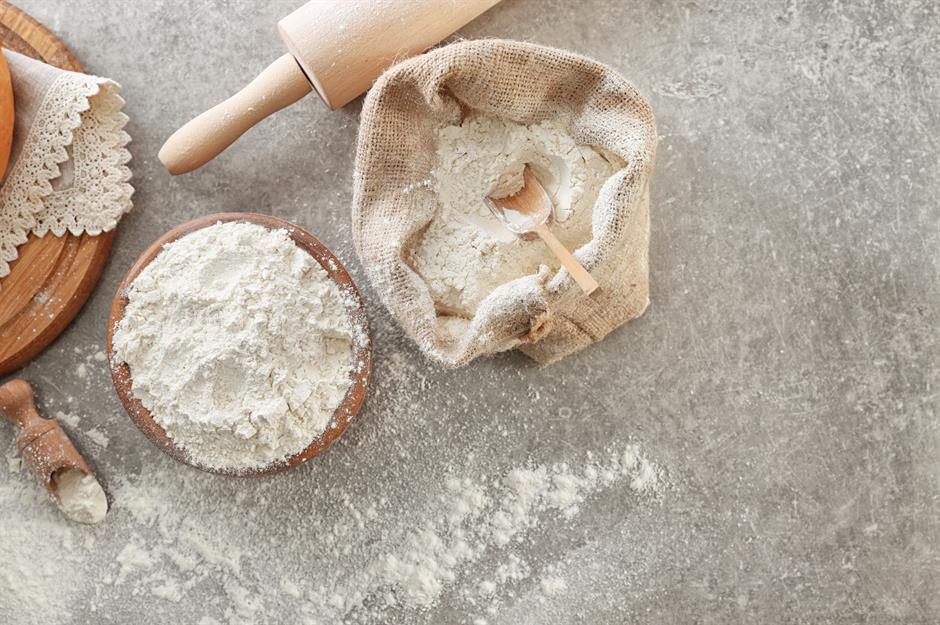
The flours you should have in your cupboard depend on the style of your cooking. If you bake often, then you should always have plain and self-raising flours to hand. Bread bakers will want to stock up on strong flour, paying attention to the protein content. If you mostly make pancakes or use the odd spoonful to thicken dishes, then plain flour is fine. Remember you can always 'convert' plain flour to self-raising flour by adding baking powder. Flour doesn't keep forever and can attract weevils, so store it in an airtight container to help it last longer.
30. Cornflour
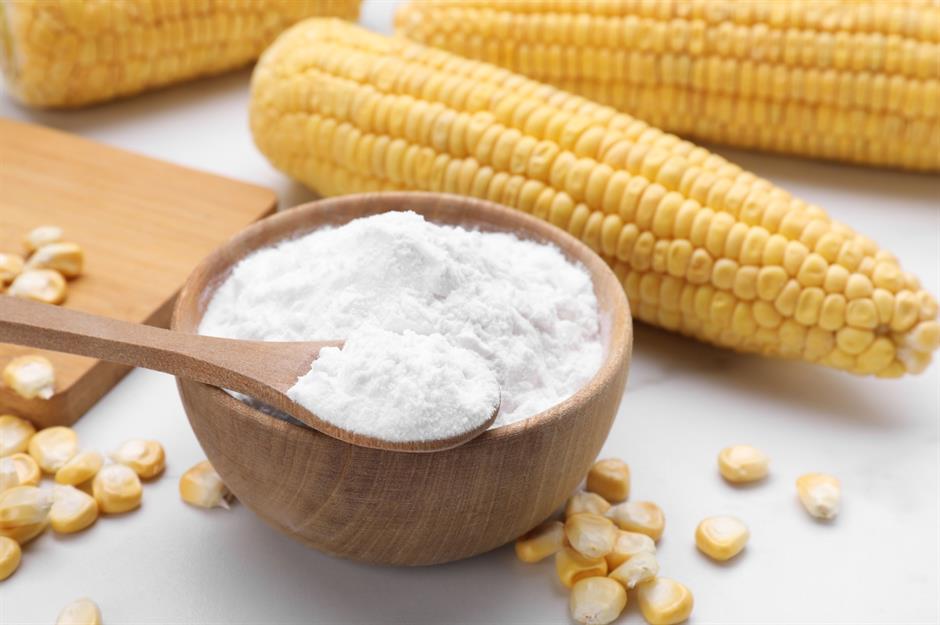
Cornflour deserves its own mention, separately from other flours, because it has its own magic powers. Like other varieties, it can be used to thicken sauces, but cornflour mixes to an amazing paste (which is solid when still and liquid when it moves) – and it does the job better than anything else. Cornflour is also the perfect secret ingredient for breading and batter, creating light and crispy coatings on fried food.
29. Couscous and bulgur wheat
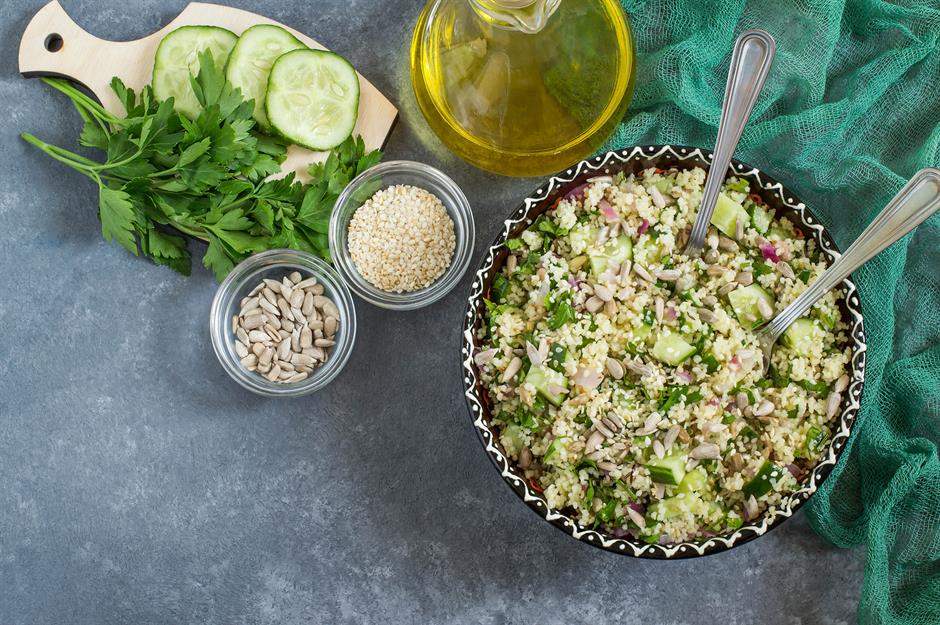
Both couscous and bulgur wheat are perfect for salads, particularly those from the Mediterranean and Middle East. As grains on their own, they're pretty bland, but you can really ramp up the flavours with citrus fruits, fresh herbs and vegetables. Add even more deliciousness by cooking couscous or bulgur wheat in stock, rather than water.
28. Redcurrant jelly
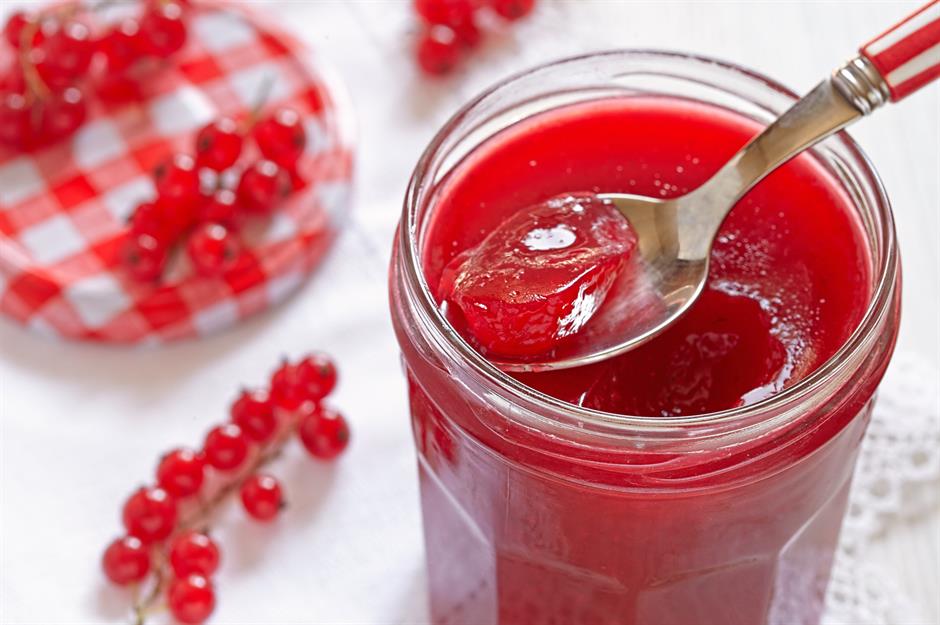
Redcurrant jelly is such an invaluable ingredient for sauces and gravies, adding a hint of fruity sweetness. It's also great served with lamb, venison and other game meats. Gently melted, it makes a lovely glaze for berry tarts, too. Do search out a good brand – many are overly sweet, which masks the acidity of the berries.
27. Mustard

If we were to recommend the more useful mustards to have in your cupboard, they would be Dijon mustard, wholegrain mustard and English mustard powder – unless we’re talking hot dogs (in which case, American mustard is best). As well as serving as a condiment, mustards are perfect in salad dressings and dips, and they're a welcome addition to casseroles, stews and mac ’n’ cheese. After opening, keep your mustard in the fridge; it'll lose its heat faster if stored in the cupboard.
26. Canned fruit
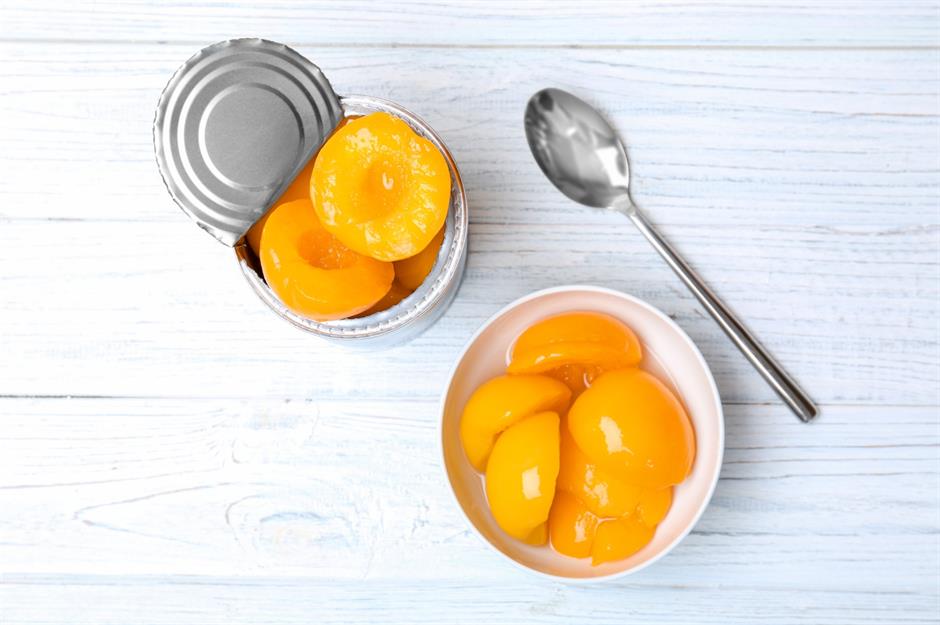
Who remembers having tinned peaches or fruit salad for a quick, cheap dessert? Tinned fruit is still a tasty option for a sweet treat, and you’re not limited to eating it straight out of the can. Tinned fruits like peaches, pineapple slices, apples and even rhubarb are handy for a last-minute crumble or pudding, and they can be used in cakes and pies, too. Of course, you can always just dig in with a spoon if you feel like it (maybe with a good dollop of hot custard).
25. Noodles

The choice of dried noodles available is ever expanding, and that’s before we even get to straight-to-wok noodles, which don’t need to be precooked. It's easy to find gluten-free noodles too, made from buckwheat or rice, so everyone gets to enjoy them. They have a long shelf life and are perfect for soups (such as tom yum), as well as stir-fries and salads.
24. Nuts
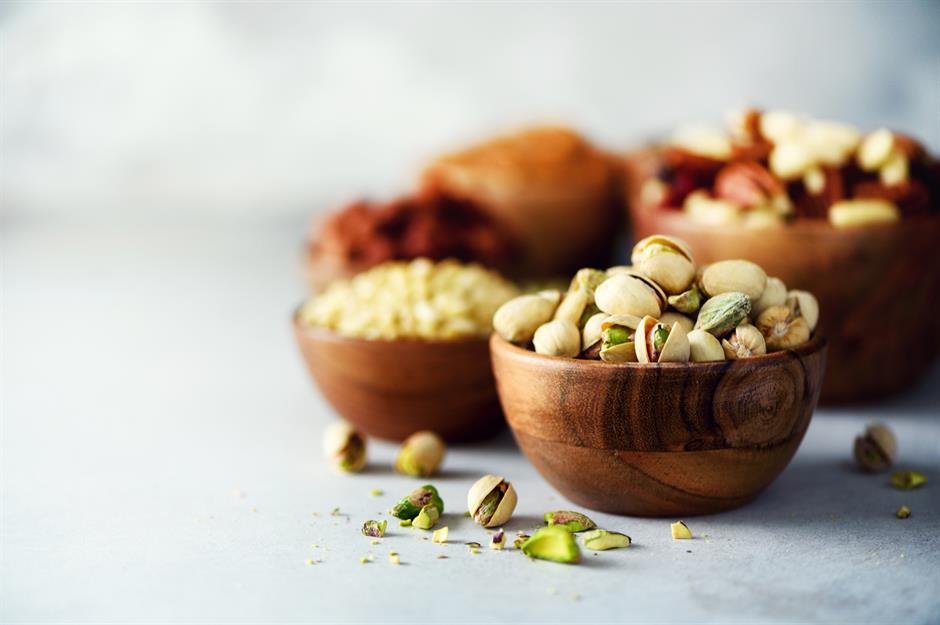
It's best to buy nuts as and when you need them (as their oil content causes them to go rancid quickly once opened), but our top tip is to store them in the freezer in an airtight container. This method means you can keep them on hand without their quality deteriorating. Unsalted nuts can be used in salads, curries, cakes and cookies, and they also make an easy high-protein snack. Pistachios go well in cakes and Middle Eastern recipes, peanuts are perfect for satays and stir-fries, and almonds go with almost anything.
23. Olive oil
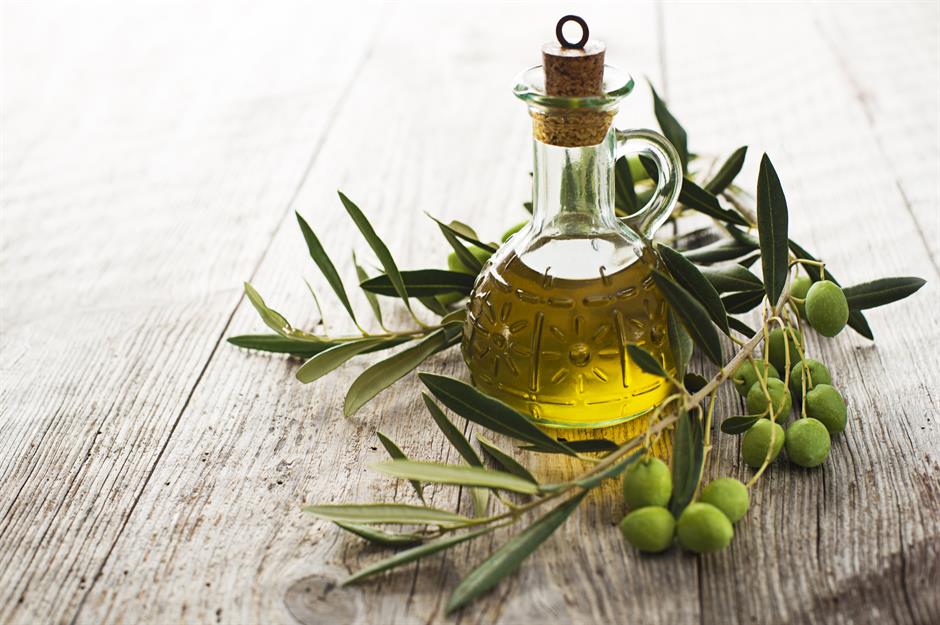
There are two types of olive oil everyone should have in their kitchen. The first is a top-notch extra-virgin olive oil to drizzle on salads and vegetables. The second is a blended oil (which will be much cheaper) to use in pesto, pasta and other cooked recipes. Make sure to store your olive oils out of sunlight in a dark cupboard to keep them at their best.
22. Cooking and salad oils
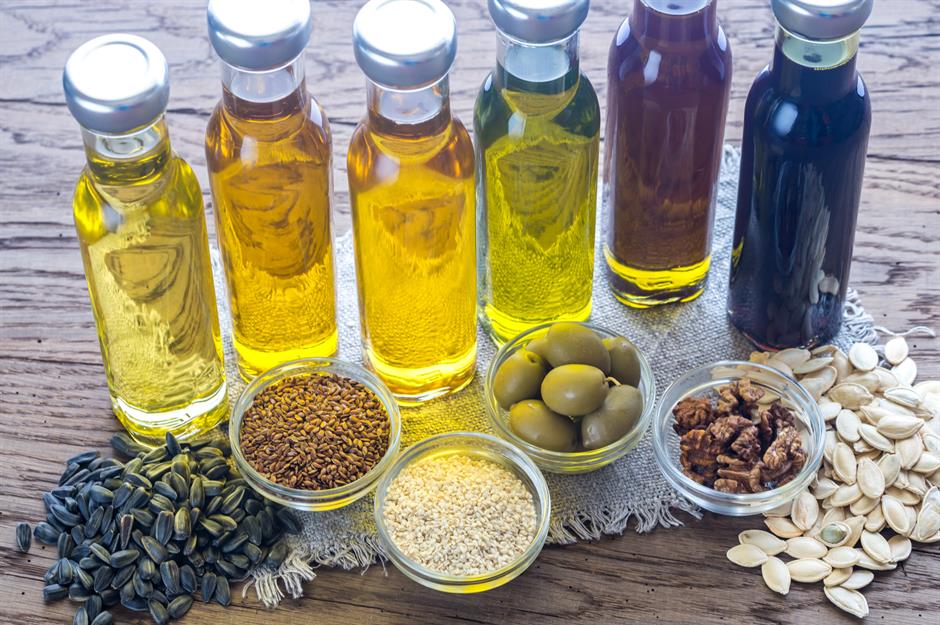
There are so many different oils available, it's hard to choose which ones you need. Apart from your swanky extra-virgin olive oil, we'd recommend sunflower oil or peanut oil for general frying and sautéing. Nut oils, such as walnut oil, which are wonderful in salads, go rancid quickly, so buy them in small quantities. Rapeseed oil is very on trend, but it does have a vegetal taste, so it's better for cooking rather than drizzling over salads (unless you can find a cold-pressed rapeseed oil, that is).
21. Capers and olives
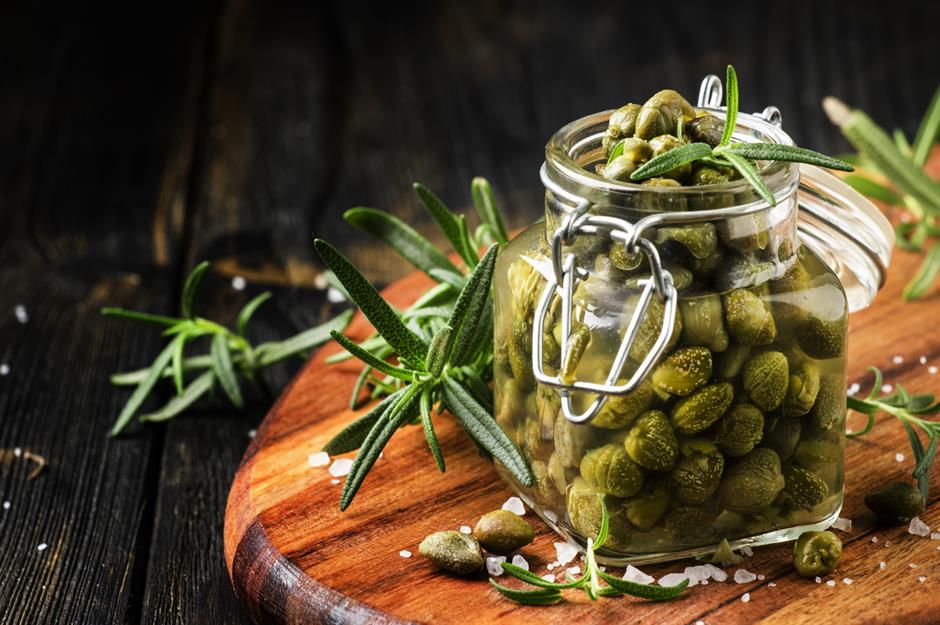
Where would our Italian cooking be without capers and olives? They take a simple pasta sauce to a new level, can jazz up a Margherita pizza, and they give wow factor to an easy potato salad. Capers in melted butter and lemon juice make an instant sauce for white fish, while black olives take centre stage in a tapenade. If you can track down tasty, good-quality pitted olives, you'll make life much simpler. Capers are a flavour powerhouse too but, if they’re in salt, they'll need to be rinsed before you use them.
20. Vinegars
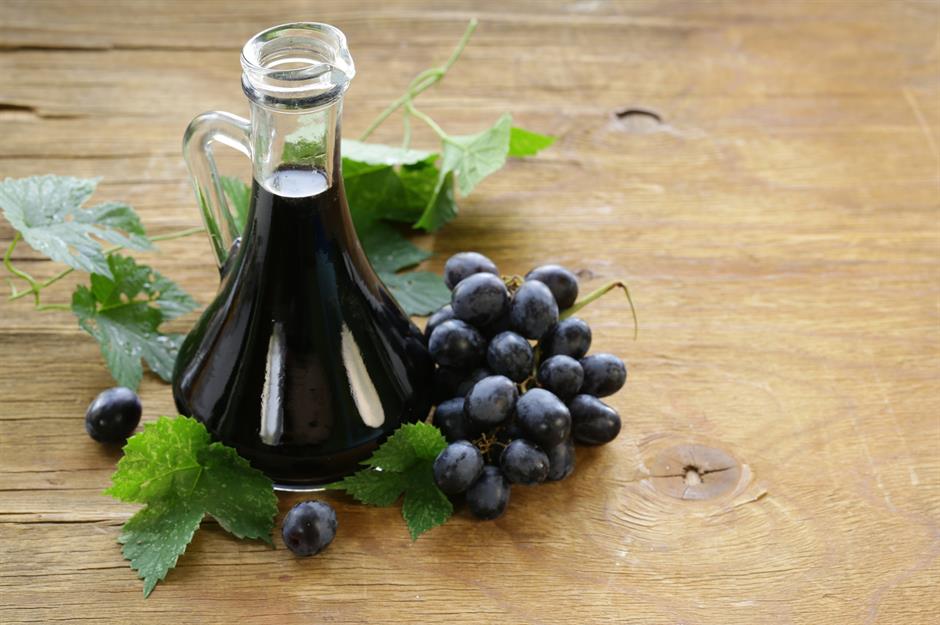
If you have white wine, red wine, balsamic, sherry and rice vinegars in your cupboard, you should have all your bases covered. They keep well, so you don't have to worry too much about buying vinegar that you’ll use less often. Try using different vinegars in salad dressings – if you work on the general rule that you need three parts oil to one part vinegar, you'll get good results. Add garlic, mustard and fresh herbs as you like.
19. Peanut butter
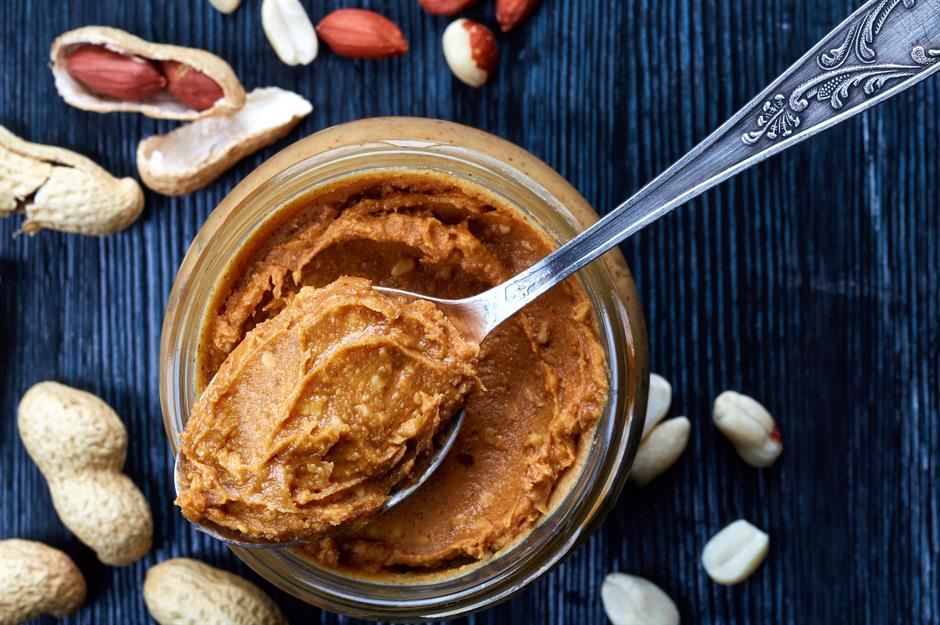
Peanut butter is pretty versatile. It's divine in a banana smoothie and great in cookies, and it makes an easy satay sauce for chicken and stir-fries. We'd recommend you use coarse or crunchy peanut butter rather than smooth peanut butter in recipes for extra texture; however, you can always have both in the cupboard if you prefer the smoother type spread on toast.
18. Soy sauce
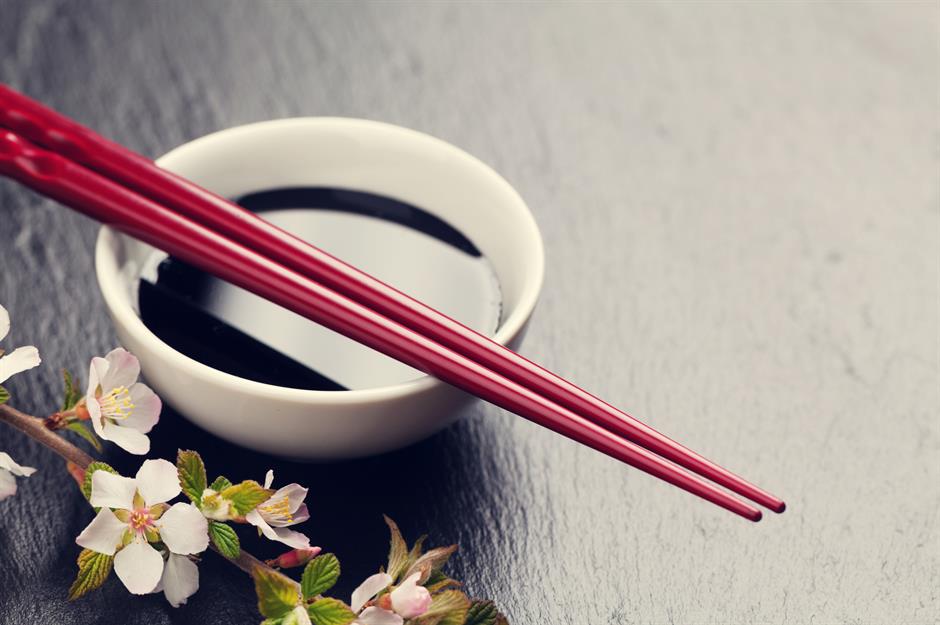
Soy sauce is a flavour enhancer and tenderiser that can be used in marinades, dips and stir-fries. Look for naturally fermented Japanese soy sauce, as unnaturally fermented sauces can be overly salty. Reduced salt soy sauce is available too, if you’re watching your intake. Take note that soy sauce contains wheat; so, if you’re gluten intolerant, look for tamari sauce instead (it’s still made from soy, but it's gluten-free). Always go for the best you can afford – the better the quality, the less you'll need to use.
17. Tomato ketchup

Let's be honest – most of us have a bottle of ketchup in the cupboard. But it's a handy ingredient, as well as a side sauce for fries. You could use it to make a quick dipping sauce for spring rolls by combining it with soy sauce and a hint of chilli, you could add it to a pasta sauce when you need more tomato flavour, or you could mix it with orange juice, sugar and vinegar to create a sticky barbecue sauce. Be sure to try a few brands out to find the one you like best; some are lower in sugar than others.
16. Rice
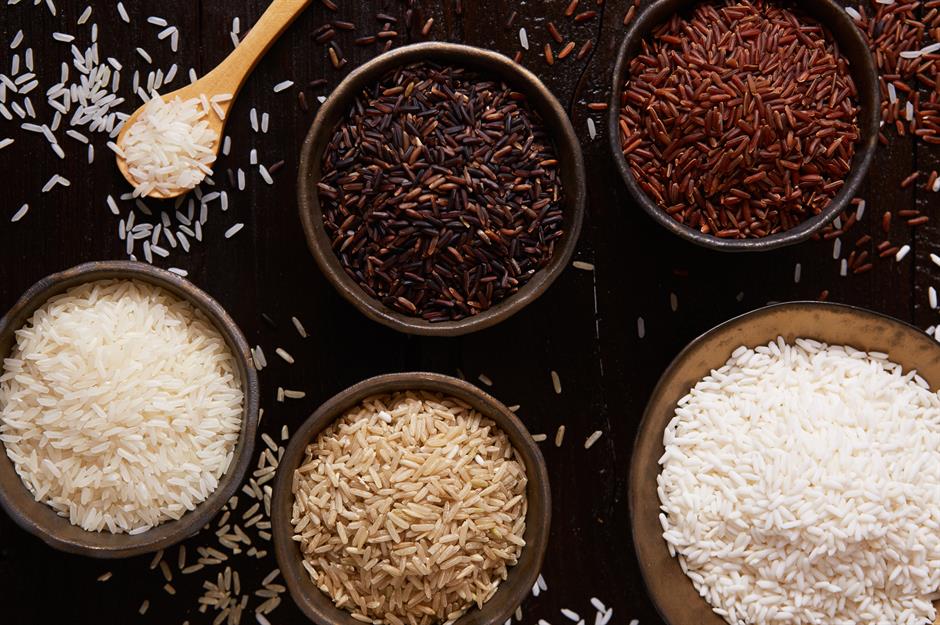
Each type of rice has a different purpose – basmati for Indian dishes, arborio for risotto, bomba for paella and jasmine rice for Thai – so buy based on what you like to cook. You may want some fibre-packed wholegrain rice in there, too. But if you want to save space with an all-rounder, long-grain rice is a good multi-purpose product. Like other store cupboard ingredients that can be vulnerable to moisture and bugs, it's best to decant rice into sealed plastic containers (and it’s much neater than keeping it in the bag).
15. Horseradish and wasabi
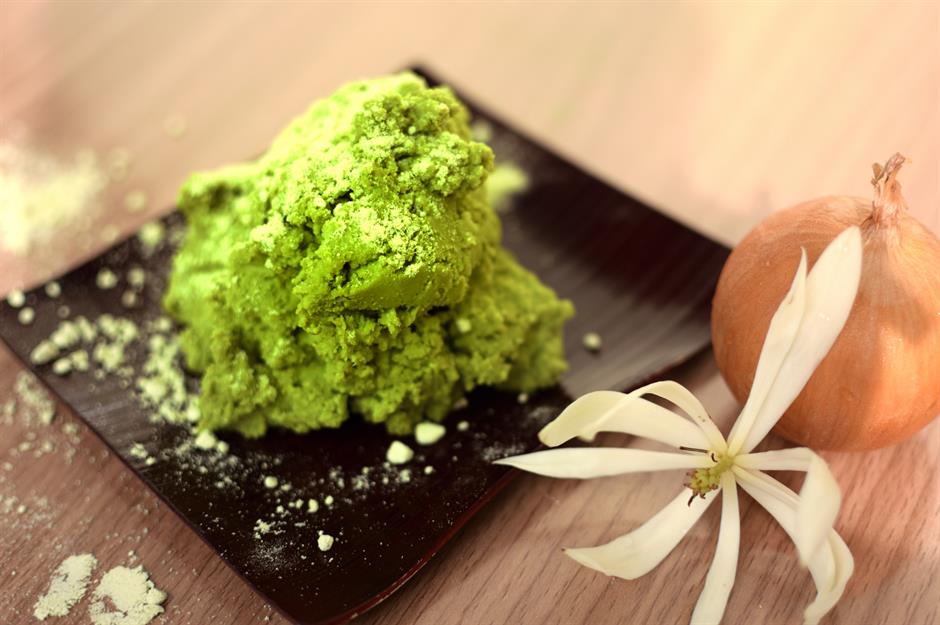
If you love the punchy heat of horseradish or wasabi, it's worth finding a place for them in your kitchen cupboard. Adding horseradish to a fish pie or a fish cake provides zing, but the jarred sauces are often too mild, so we love to add some wasabi powder for an extra kick. Of course, horseradish is the classic accompaniment to roast beef and smoked fish, but it's also great in mayonnaise to serve with prawns. It’s surprisingly easy to grow horseradish yourself too, so you can grate the root straight into your dishes.
14. Instant stock
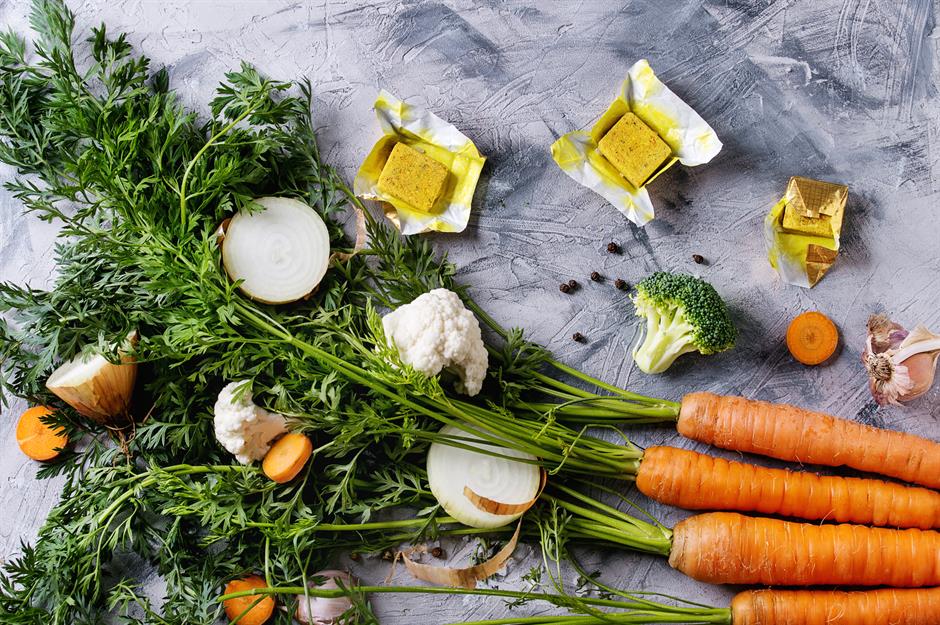
There isn't always time to make your own stock, so have a selection in the cupboard – beef, chicken and vegetable are the ones you'll use the most. Whether you buy cubes, powder or the jelly-like stock pots (our favourite), you'll always have something to hand for risottos, soups, gravies and casseroles. Go for quality, if you can, to get more flavour from your stock.
13. Sugar
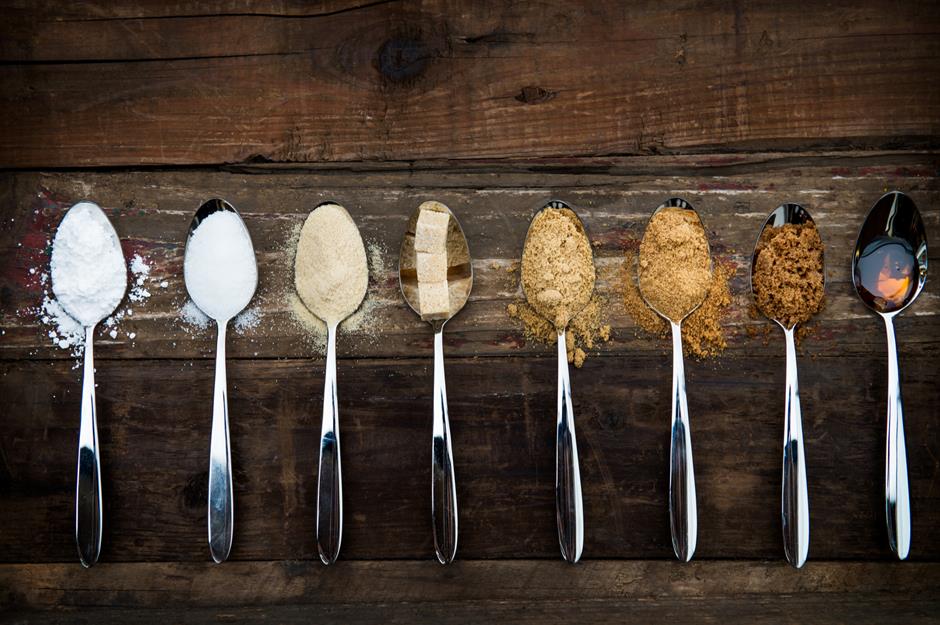
Try to stock up on unrefined sugars made from pure sugar cane; they'll add a better depth of flavour to your cooking in both sweet and savoury foods. Unrefined sugars include golden caster sugar and light and dark brown soft sugars. If you love Asian cooking, you could buy palm sugar made from coconut palm, which can be used in marinades for meat and fish.
12. Chilli sauce
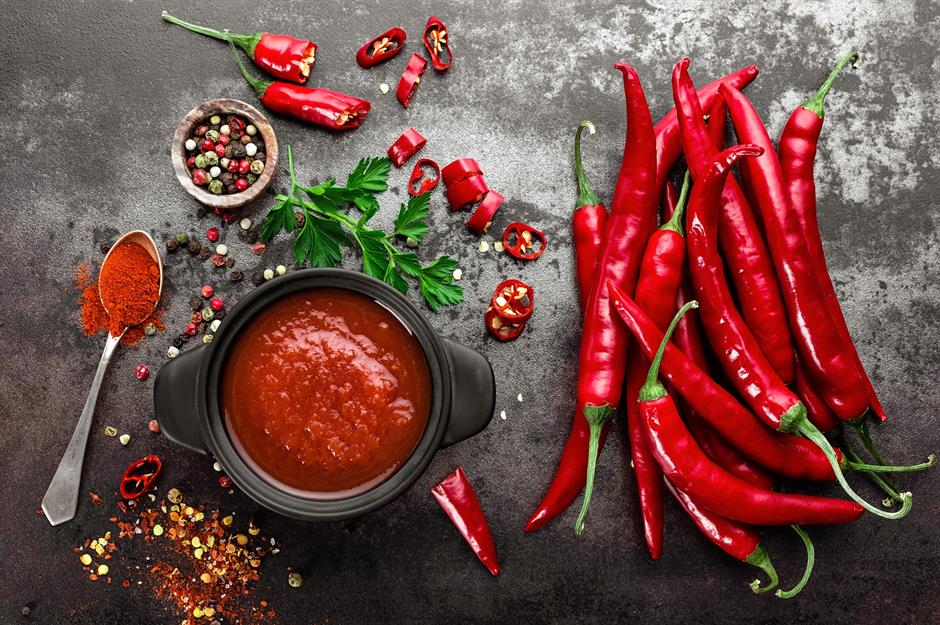
Whether you're a Tabasco lover or sriracha is more your thing, it's always handy to have a bottle of chilli sauce in the cupboard. It's perfect for perking up dishes that could do with an extra dash of heat, and it’s also useful when you've added fresh chillies which aren't quite as hot as you'd like to a dish. You can use chilli sauce both as a key ingredient in your cooking and as a condiment to spice up any dish.
11. Tinned fish
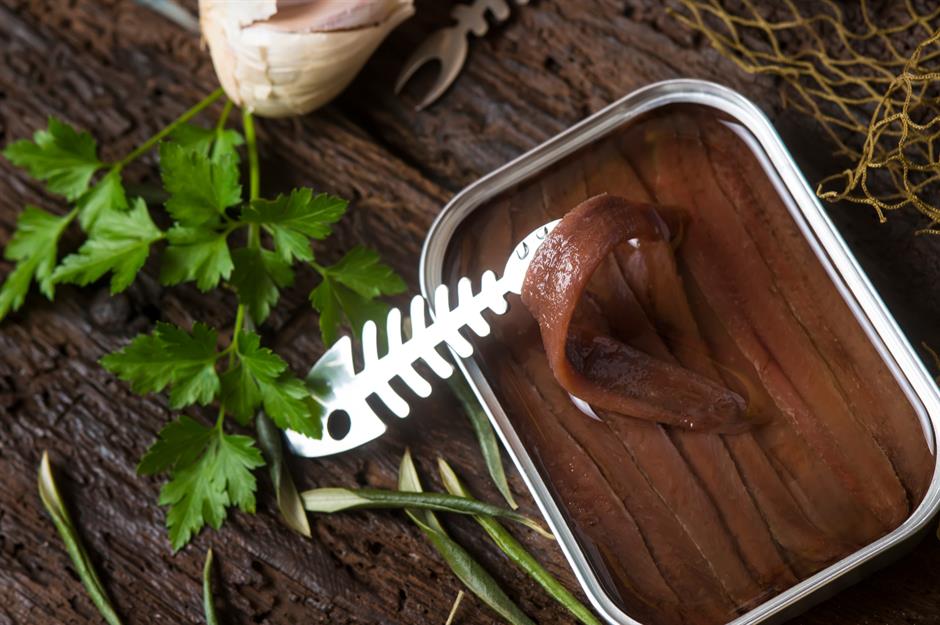
A tin of anchovies is a store cupboard staple, whether you want to use the fish for a pasta sauce, add them to dauphinoise potatoes, or cook them with a roast leg of lamb (trust us – it won't taste fishy at all!). The same goes for sardines, which are full of healthy omega-3 fatty acids; they'd make the perfect instant lunch served on wholemeal toast. Tinned salmon is great for quick fish cakes or for bulking out a fish pie, and tuna is a must for a retro pasta bake.
10. Tomato purée and passata

Tomato passata consists of smooth, sieved, uncooked tomatoes, and tomato purée is a concentrated version. Both are really useful ingredients to have on hand. A touch of purée (careful, it's strong!) can be added to soups and sauces, or used to add a little tomato flavour to a casserole. Use passata when you don't want any pieces of tomato in your recipe. It's especially useful as a tomato sauce base for pizza or for a quick tomato soup. Gently fry an onion, add the passata, heat it all through, then add a little cream and some fresh basil.
9. Worcestershire sauce
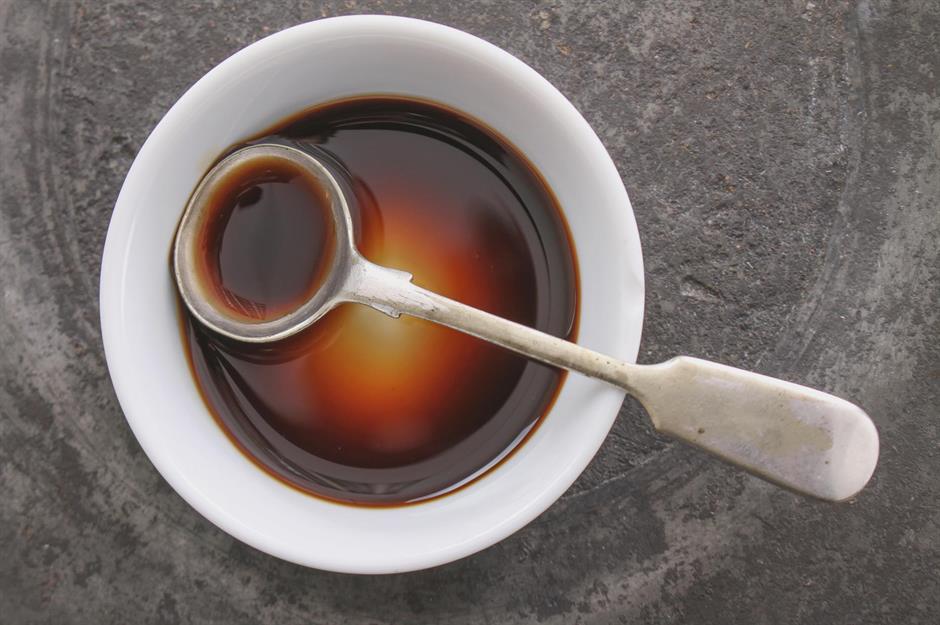
Worcestershire sauce contains anchovies and can be used to add a savoury umami flavour to a variety of dishes, without adding any fishy notes. Add it to soups and meaty casseroles, or spike your Bolognese sauce for extra depth of flavour. A splash of Worcestershire sauce makes all the difference to cheese on toast or a prawn cocktail, and a bottle can last you a long time.
8. Dried mushrooms
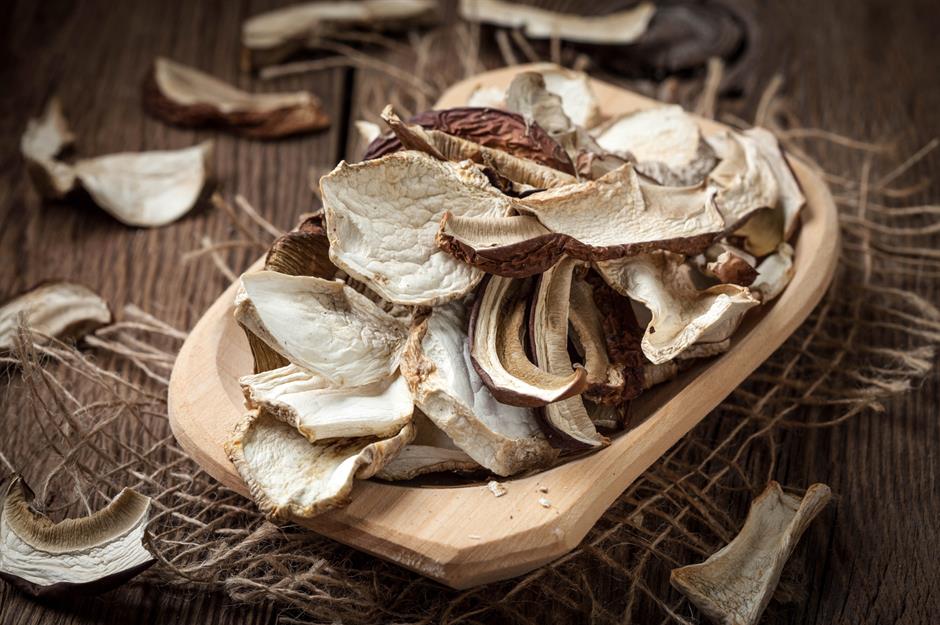
With such a long shelf life, dried wild mushrooms are a useful ingredient, especially when the colder weather sets in and you're in the mood for hearty stews and soups. You simply rehydrate them in warm water, then strain them. You can use the soaking liquid as a stock too, so all that flavour doesn’t go to waste. They add a deep, savoury flavour to dishes such as risottos, or you can toss them into a beef casserole. You could also combine them with fresh mushrooms in a warming soup.
7. Tinned pulses

High in protein, tinned pulses deserve their place in a well-stocked store cupboard. A tin of chickpeas can be transformed into hummus with a mixture of olive oil, tahini, lemon juice and garlic. Meanwhile, lentils can bulk out a shepherd's pie, cannellini beans would be great in a tuna salad, and kidney beans and black beans can be used to make an easy, super-fast veggie chilli. You can add beans to soups and stews to make them go further, too.
6. Pesto
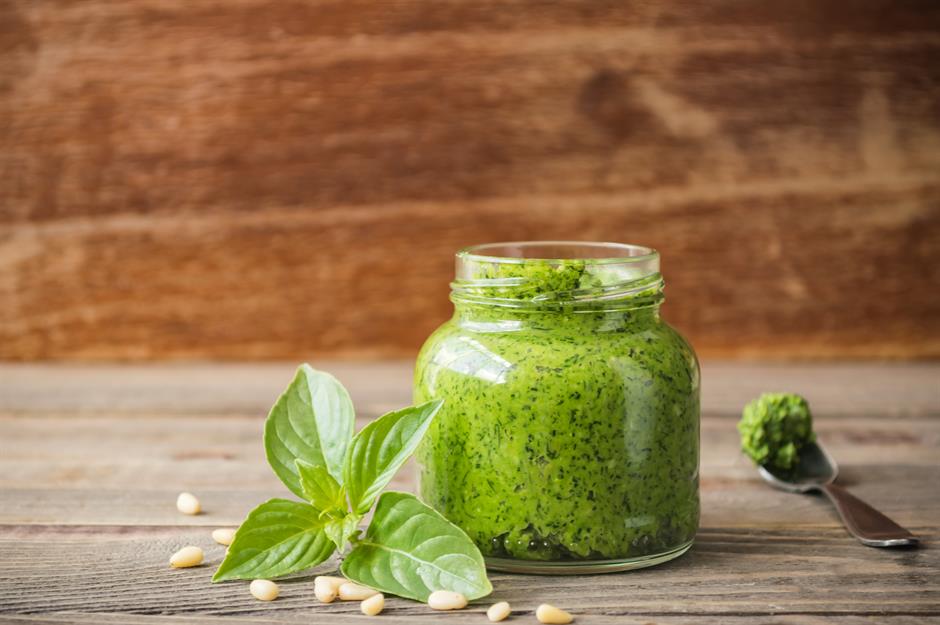
A jar of pesto can be used in so many ways. Yes, you can toss it into pasta for a speedy midweek meal, but you can add it to mayo to make a quick dip for chips and vegetables, too. Alternatively, you could spread it on a piece of salmon with some grated Parmesan and pop it under the grill for a cheesy, herby fish dish. It also works really well in an easy Italian-style chicken tray bake (which, as a bonus, will leave you with minimal washing up).
5. Chocolate and cocoa powder

Cocoa powder is handy for all sorts of baking recipes, but you want proper cocoa powder, not drinking chocolate. Dark chocolate also works well in a variety of bakes (look for 55-70% cocoa solids for better quality and to control sweetness). To melt dark chocolate, break it up into a heatproof bowl and place it over a pan of gently simmering water – without the bowl touching the water. Keep the heat as low as you can, leaving the chocolate to melt (around five to 10 minutes). Using the microwave can cause the chocolate to burn in the centre, so it's best avoided.
4. Salt and pepper
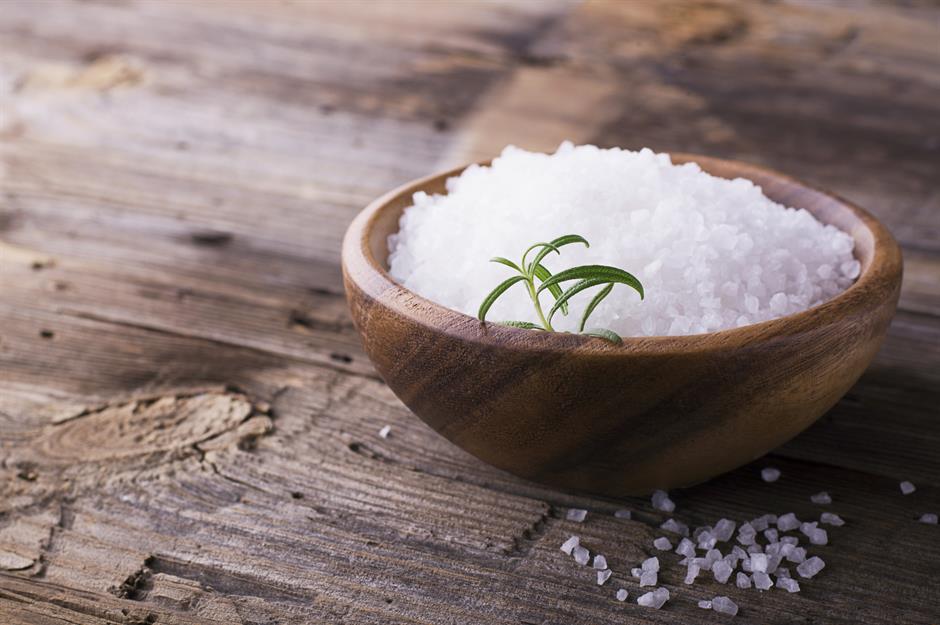
The quality of salt you buy makes a big difference to your cooking. Opt for sea salt or kosher salt for the best results. Both of these have a pure taste, and you’ll use much less of them than standard table salt – which helps to balance out the slightly higher cost. Buy whole peppercorns too, and invest in a good pepper grinder so you can have freshly milled black pepper every time.
3. Dried pasta
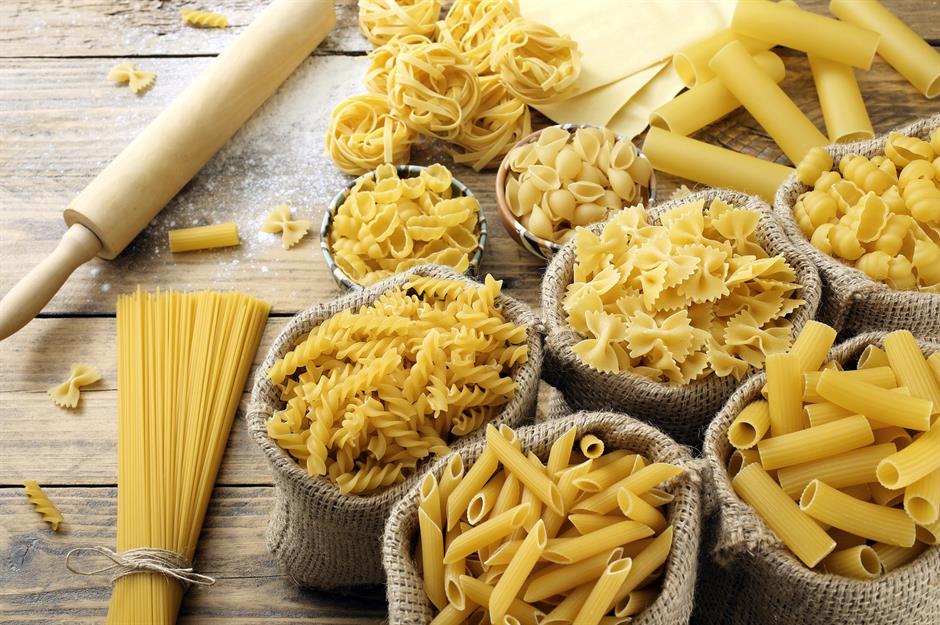
You'll want a selection of short and long pasta varieties in the cupboard so you can use them for different purposes. Penne and conchiglie are great for holding sauce, while long pasta like spaghetti and tagliatelle can be coated evenly for a consistent flavour with every bite. Fresh pasta isn't better than dried pasta, it's just different – and low-quality fresh pasta is definitely worse than dried pasta when cheaper, coarser flour is used. The best advice we can give is to always buy Italian pasta. Non-Italian pastas, such as own-label brands, can often come out soggy.
2. Honey
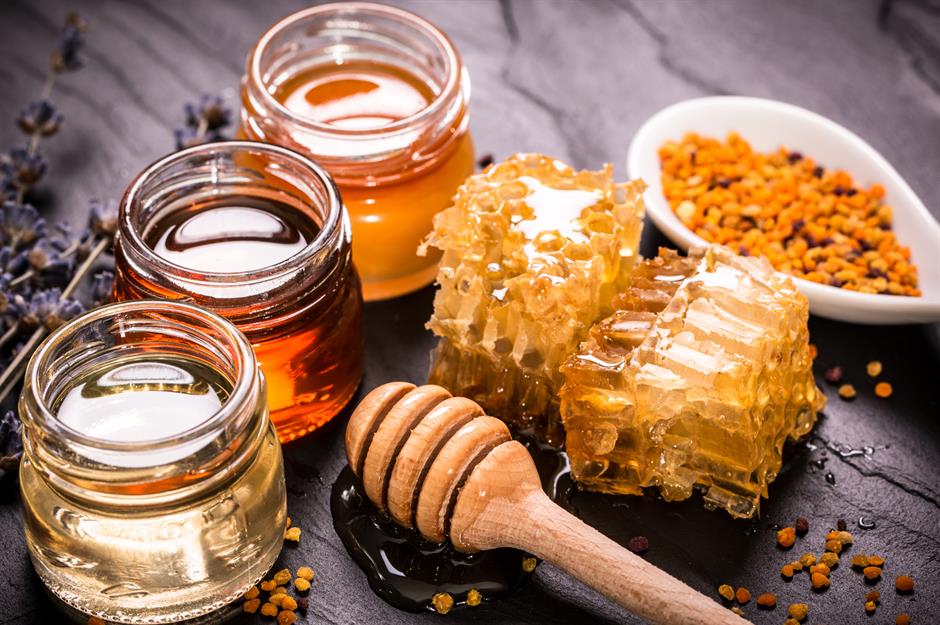
Honey isn't just for toast or porridge, however delicious they are. If you love Chinese cooking, a drizzle of honey will add a note of sweetness to counterbalance hot and sour flavours. It's also great in dipping sauces, working to counteract the heat of any chilli present. In baking, it can be the star of the show in cakes like Devonshire honey cakes and German Bienenstich cakes. It holds in moisture, making it perfect for soft cakes and biscuits.
1. Tinned tomatoes
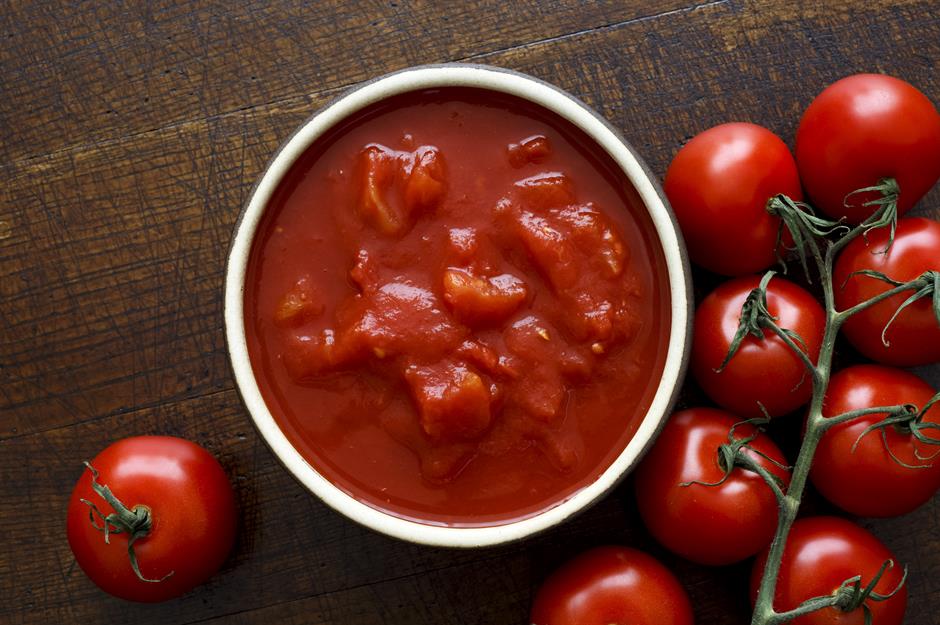
It's really worth hunting out a good Italian brand of tinned tomatoes. The flavour will be more concentrated, and the tomatoes will be less watery compared to cheaper brands and supermarket labels. You can now find tinned cherry tomatoes too, which are perfect for homemade pasta sauces. Just gently fry off a chopped onion, add some garlic, then pour in the tomatoes and a pinch of dried oregano for a really quick pasta sauce.
These are the foods you should never keep in the fridge
Last updated by Laura Ellis.
Comments
Do you want to comment on this article? You need to be signed in for this feature